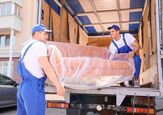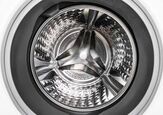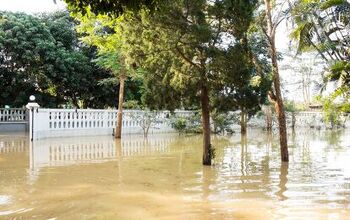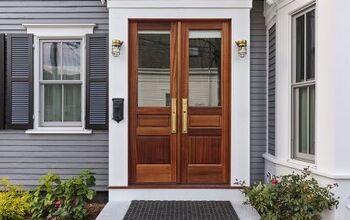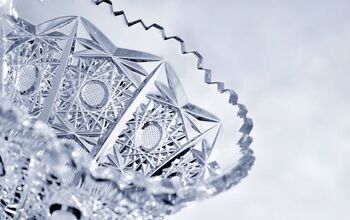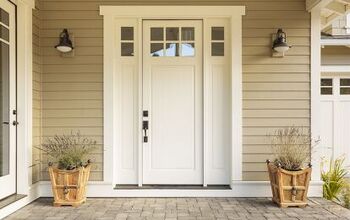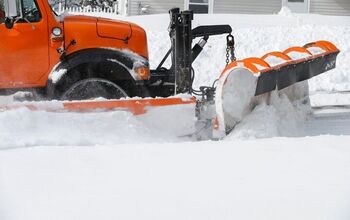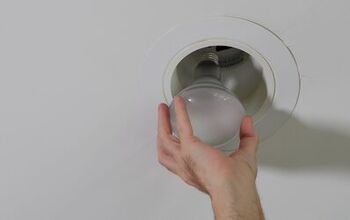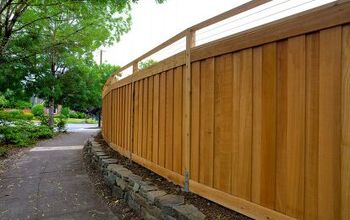Is it Better To Pick Up Leaves Or Keep Them On The Ground?

You may feel overwhelmed when you look at your lawn and see a seemingly endless pile of dead leaves. After all, you can’t count on the wind to take care of them for you, but you may not be ready to pick them up. So, is it better to pick up leaves or leave them?
It’s a great idea to let some dead leaves remain on your lawn and in your flower beds during the fall and winter. Doing so can infuse the soil with nutrients, like potassium and nitrogen, which encourage healthy growth. However, having too many leaves on your lawn can deprive the soil and roots of air and sunlight.
It’s a tricky subject because going too far one way or the other can ultimately harm your lawn and flower beds. Follow along as we explore whether or not it's a good idea to pick up leaves and highlight how to strike a healthy balance.
Is Raking Leaves Good For The Lawn?
Choosing whether to rake leaves or keep them on the ground can ultimately impact lawn health. However, it’s more complicated than simply saying “leaving them is better than picking them up.” That’s because too many leaves on the lawn can cause harm, as can picking them all up. That’s why we broke it down into a comprehensive list of pros and cons to help you make your decision.
Pros Of Raking Leaves
Raking leaves may not be fun, but it is a part of fall and winter yard maintenance that countless homeowners practice. You and your lawn can benefit from raking leaves in many ways, such as:
Keep Your Yard Tidy
Many people take pride in keeping a tidy yard, and that’s understandable. After all, you spend a lot of money on bills, mortgage payments, and property taxes. Because of that, you may feel compelled to pick up leaves each fall and make your yard look as neat as possible.
This may even be required if you live in a Homeowners Association neighborhood, depending on the bylaws. HOAs often enforce strict regulations regarding your home’s appearance, which typically includes the lawn and even flower beds. That said, you may take it upon yourself to set a high standard for your yard’s appearance even if you don’t live in an HOA.
Eliminate Pesky Pests
Depending on where you live, the trees in your yard may be jam-packed full of pests. For example, ticks often perch up in trees and wait to drop on animals and people. The leaves that fall in your yard may contain ticks and other pests, so getting rid of them may benefit you.
However, you must protect your skin if you suspect harvest mites and ticks are nearby, as they may view you as a snack. Wear tall boots, long socks, and thick pants to ensure such pests can’t burrow into your skin. That said, it’s a great idea to research the local wildlife in your area to see if you even need to worry about such pests.
Let The Lawn Breathe
The number of leaves that fall on your lawn will vary based on the number and type of trees around you. Naturally, leaves may cover your lawn if your yard is surrounded by dense trees, which can cause issues. That’s especially true if you can barely see any blades of grass because there are so many leaves on your lawn.
Thick piles of leaves, in extreme cases, can smother your yard, depriving the grass of sunlight and oxygen. Water may struggle to pass through the soil as well, especially if it’s even partially compacted. In that case, it’s worth raking the leaves to let your lawn get air, water, and sunlight.
That said, this problem is unique to homeowners with homes surrounded by trees. Otherwise, it’s unlikely that your lawn will get so covered in leaves that the grass dies. At the very least, you can pick up enough leaves to make your grass more visible and ensure it can breathe.
Cons Of Raking Leaves
Raking leaves has its benefits, but some people worry if the downsides outweigh the positives. That’s especially true when you consider a few unpleasant outcomes, such as:
The Soil Will Miss Out On Nutrients
Organic matter helps plants grow, and that’s why composting is so big. Organic matter releases nutrients, such as potassium and nitrogen, which can enrich soil and encourage healthy plant growth. Raking leaves on your lawn can, unfortunately, deprive the soil and grass of these vital nutrients.
This alone should be enough to make you think twice before picking up leaves this fall and winter. That doesn’t necessarily mean you should leave your lawn totally covered in dead leaves. However, it’s worth at least leaving a thin layer across your yard.
Lightly crush some dead leaves and scatter them throughout your flower beds and at the base of shrubs and trees. Some people mow their lawns to shred and spread dead leaves. Rake bothersome patches of leaves, but hold on to some to enrich your soil one last time for the year if you feel inspired.
Displaced Pollinators
If you take pride in your yard, then you probably recognize how much bees and other pollinators help you out. These helpful pollinators can’t be around year-round in most climates, and that’s where dead leaves and brush come into play. Many pollinators hide among fallen leaves and other yard debris throughout the fall and winter to seek warmth.
The dead leaves offer a warm shelter where bees and other bugs can wait until the cold weather passes. Solitary bees often burrow into small holes in your lawn that you can’t likely see without a keen eye. A nice layer of leaves can help protect them from rain, snow, and ice until they emerge in several months.
You can support your local pollinators by leaving some leaves on your lawn this fall and winter. Doing so will keep them safe during the winter, which helps ensure they come back strong in the spring. Even simply leaving a few piles of leaves in certain parts of your yard can help pollinators.
Roots May Be Vulnerable
Surviving the winter in rainy climates can be challenging for many plants, especially when they are left unprotected. That’s especially true for barren lawns and dormant flower beds without any leaves or mulch in sight. You can use fallen leaves to protect the roots of many plants from poor soil drainage and extreme cold temperatures.
Leaves are like traditional mulch in that they can help improve soil moisture retention. Leaving some leaves on your lawn, around your trees, and in soil beds can help protect roots. The last thing you want to do is discover rotten, useless roots after the winter is over.
Weeds Can Thrive
You’re not alone if you've ever been duped into thinking that weeds die off in winter. Some types of weeds go dormant, but others, like dandelions and chickweed, do well in cold weather. They especially thrive in uncovered soil, where they can grow without obstacles.
Raking leaves removes a barrier that would otherwise help stop weeds from growing. Conversely, leaving and mulching leaves can help stop weeds from getting sunlight and air. The trick is to leave some empty spaces to ensure the lawn itself can get enough sunlight.
However, it’s a great idea to keep some leaves in areas where you typically find weeds. This can help you get a head start on weed control long before the spring arrives.
Summing It Up
It’s better to keep some leaves on your lawn than to remove them all this fall and winter. That way, you can enrich your lawn with nutrients and protect the roots without smothering them. Scatter leaves in your garden beds and at the bases of your trees and shrubs to ensure your plants bounce back well in the spring.
Related Guides:

Nick Durante is a professional writer with a primary focus on home improvement. When he is not writing about home improvement or taking on projects around the house, he likes to read and create art. He is always looking towards the newest trends in home improvement.
More by Nick Durante
